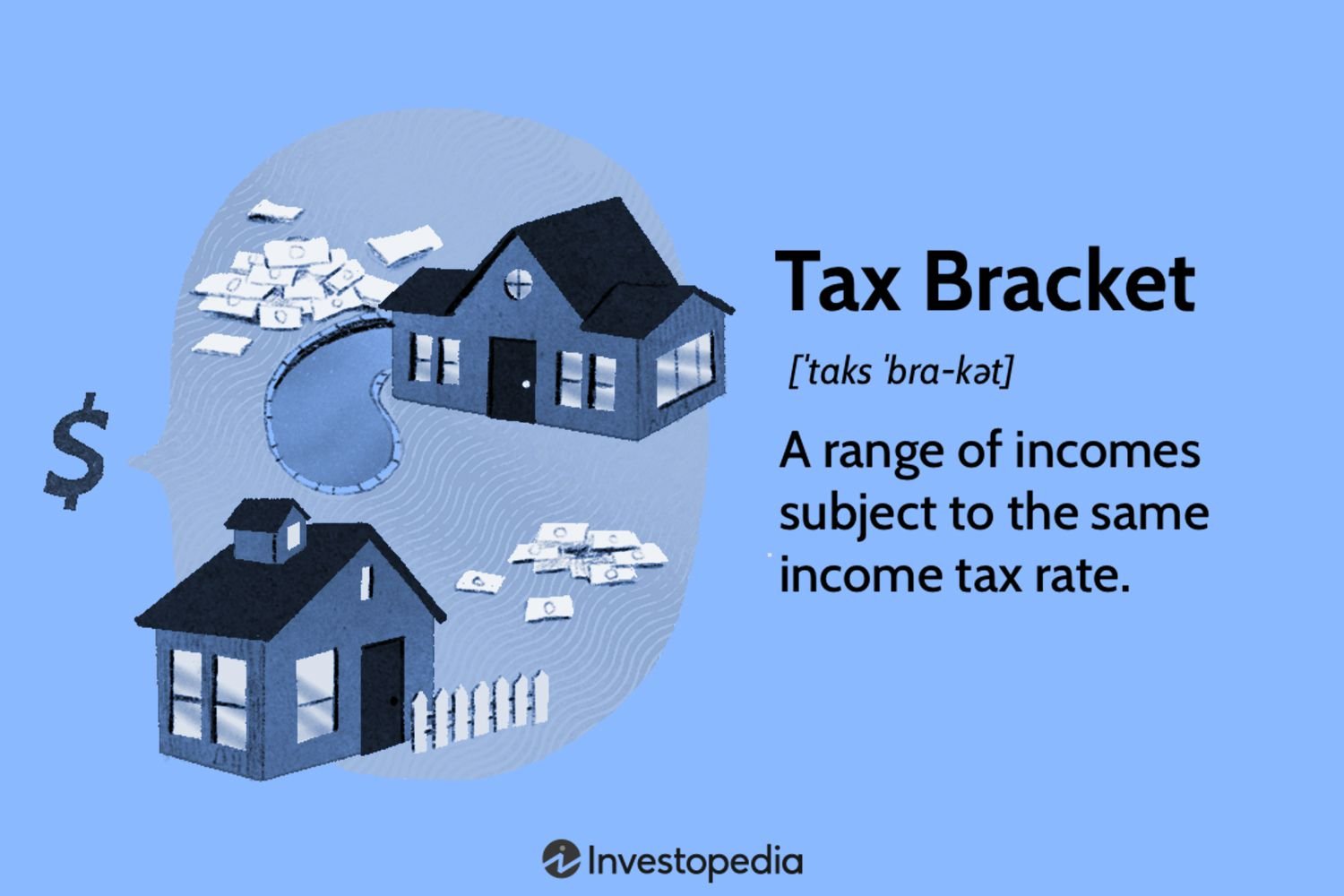If you’ve ever found yourself scratching your head while trying to make sense of your tax return, fear not! Understanding the basics of tax brackets may seem daunting at first, but with a little guidance, you’ll be well-equipped to navigate this essential aspect of personal finance. So, what exactly are tax brackets? Well, they’re the different income ranges that determine how much tax you owe. By familiarizing yourself with how tax brackets work, you can ensure you’re making informed decisions when it comes to managing your finances and minimizing your tax liability. Let’s dive in and demystify the world of tax brackets together.
Understanding the Basics of Tax Brackets
Introduction
Tax season can be a challenging time for many individuals and businesses. Understanding how tax brackets work is crucial in managing personal finances and making informed financial decisions. In this article, we will delve into the basics of tax brackets, demystifying the concept, and providing you with the knowledge to navigate the world of taxation with confidence.
What are Tax Brackets?
Tax brackets are the ranges of income within which different tax rates are applied. Income tax in most countries is progressive, meaning that the tax rate increases as income increases. Each tax bracket corresponds to a specific range of income and has its own associated tax rate. By understanding tax brackets, individuals and businesses can determine the amount of tax they owe based on their income level.
How Tax Brackets Work
Tax brackets work by dividing income into separate ranges, with each range taxed at a different rate. Let’s consider a hypothetical tax system with three tax brackets: 10%, 20%, and 30%. Here’s how it would work:
- The first tax bracket applies to income up to $50,000 and has a tax rate of 10%.
- The second tax bracket applies to income between $50,001 and $100,000 and has a tax rate of 20%.
- The third tax bracket applies to income above $100,000 and has a tax rate of 30%.
If you earn $60,000 in this scenario, you would pay 10% tax on the first $50,000 and 20% tax on the remaining $10,000. Understanding tax brackets allows you to calculate your tax liability accurately.
Progressive Taxation
One fundamental concept related to tax brackets is progressive taxation. Progressive taxation means that as income increases, the tax rate also increases. This system aims to distribute the tax burden more equitably among different income groups.
By having tax brackets with increasing tax rates, individuals with higher incomes pay a higher proportion of their income in taxes compared to those with lower incomes. Progressive taxation ensures that those with more significant financial resources contribute proportionally more to support public services and government programs.
Understanding Marginal and Effective Tax Rates
When discussing tax brackets, it’s essential to distinguish between two important concepts: marginal tax rate and effective tax rate.
Marginal Tax Rate
The marginal tax rate is the tax rate applied to the last dollar earned within a specific tax bracket. It represents the additional tax paid on an additional dollar of income. Understanding your marginal tax rate is crucial when making financial decisions that may affect your taxable income, such as negotiating salary increases or considering additional income streams.
For example, if you are in the 20% tax bracket and you earn an extra $1,000, you would pay $200 in taxes. In this case, your marginal tax rate is 20%.
Effective Tax Rate
The effective tax rate, on the other hand, is the average rate at which your total income is taxed. It represents the total tax paid as a percentage of your total income.
To determine your effective tax rate, you divide the total tax paid by your total income and express it as a percentage. For instance, if you paid $10,000 in taxes on a total income of $100,000, your effective tax rate would be 10%.
Understanding both your marginal and effective tax rates can help you better plan your finances and make informed decisions about saving, investing, or reducing tax liability.
Tax Brackets and Deductions
While tax brackets determine the rate at which your income is taxed, deductions play a significant role in reducing your taxable income.
Standard Deduction
A standard deduction is a fixed amount that reduces your taxable income. It is available to individuals who do not itemize their deductions. The standard deduction varies depending on the tax jurisdiction and filing status.
For example, in the United States, for the tax year 2021, the standard deduction is $12,550 for individuals and $25,100 for married couples filing jointly. By claiming the standard deduction, you can effectively reduce your taxable income, potentially moving into a lower tax bracket.
Itemized Deductions
Itemized deductions are specific expenses that can be deducted from your taxable income. These deductions often include expenses related to medical care, mortgage interest, charitable donations, and state and local taxes. It’s important to note that itemized deductions are subject to certain limitations and requirements.
By carefully considering your eligible itemized deductions, you can reduce your taxable income, potentially resulting in a lower tax liability.
Tax Planning Strategies
Understanding tax brackets and how they interact with deductions opens up opportunities for tax planning. Here are a few tax planning strategies to consider:
Income Shifting
Income shifting involves redistributing income among family members or legal entities to take advantage of lower tax brackets. This strategy is common among high-income individuals who can shift income to family members with lower incomes, reducing their overall tax liability.
However, it’s important to note that the tax laws governing income shifting are complex and subject to specific rules and regulations. Consulting with a tax professional is recommended before implementing any income shifting strategies.
Contributing to Retirement Accounts
Contributing to retirement accounts such as Individual Retirement Accounts (IRAs), 401(k)s, or similar plans can have significant tax benefits. These contributions can reduce your taxable income, potentially moving you into a lower tax bracket.
Additionally, earnings on these retirement accounts grow tax-deferred or, in the case of Roth accounts, tax-free. By strategically contributing to retirement accounts, you can lower your tax liability while saving for the future.
Timing Income and Expenses
Timing income and expenses can be an effective tax planning strategy. By deferring income or accelerating expenses into different tax years, you may be able to reduce your overall tax liability.
For example, if you expect a bonus towards the end of the year, you could negotiate with your employer to defer it to the following year, potentially reducing your tax liability for the current year. On the expense side, making deductible payments early, such as paying property taxes before the end of the year, could increase your itemized deductions for that tax year.
Charitable Contributions
Making charitable contributions is not only a way to support causes you care about but also a strategy to reduce your taxable income.
By donating to qualified charitable organizations, you may be eligible for tax deductions. These deductions can reduce your taxable income, potentially resulting in a lower tax liability. Be sure to keep accurate records and consult tax regulations to ensure your contributions qualify for deductions.
Understanding the basics of tax brackets is essential for effectively managing your finances and making informed financial decisions. By knowing how tax brackets work, the difference between marginal and effective tax rates, and the impact of deductions, you can make strategic choices that minimize your tax liability.
Remember, tax laws and regulations may vary across jurisdictions, and it’s important to consult with a qualified tax professional or accountant to ensure you comply with all applicable laws and take advantage of any available tax benefits. With this knowledge in hand, you can navigate the world of taxation with confidence and make the most of your financial resources.
Tax Brackets Explained For Beginners
Frequently Asked Questions
Frequently Asked Questions (FAQs)
What are tax brackets?
Tax brackets are specific ranges of income in which different tax rates apply. They determine how much tax you owe based on your income level.
How do tax brackets work?
Tax brackets work on a progressive system, meaning that as your income increases, you move into higher tax brackets and pay a higher percentage of tax on the additional income.
How many tax brackets are there?
The number of tax brackets can vary depending on the country and tax system. In the United States, there are currently seven tax brackets.
How are tax brackets determined?
Tax brackets are determined by the government and are based on income thresholds. The government sets different tax rates for each bracket.
Can tax brackets change?
Yes, tax brackets can change over time. Governments may adjust tax brackets periodically to account for inflation or changes in tax policy.
What is the difference between marginal tax rate and effective tax rate?
The marginal tax rate is the tax rate that applies to the last dollar of your income within a particular tax bracket, while the effective tax rate is the average rate at which your overall income is taxed.
How can I find out which tax bracket I’m in?
To determine your tax bracket, you can refer to the tax bracket tables provided by the tax authority in your country. Alternatively, you can use online tax calculators or consult a tax professional.
Are tax brackets the same for everyone?
No, tax brackets are not the same for everyone. They vary based on factors such as filing status, income level, and tax deductions or credits that may apply to an individual or household.
What strategies can I use to minimize my tax liability within my tax bracket?
Some strategies to minimize your tax liability within your tax bracket include maximizing deductions and credits, contributing to tax-advantaged retirement accounts, and exploring other tax-efficient investment options. It is advisable to consult with a tax professional for personalized advice.
Final Thoughts
Understanding the basics of tax brackets is essential for anyone looking to manage their finances effectively. By comprehending how tax brackets work, individuals can make informed decisions regarding their income and deductions. The key takeaway is that tax brackets determine the rate at which income is taxed, with higher incomes being subject to higher tax rates. Awareness of these brackets allows individuals to plan their income and expenses accordingly, potentially optimizing tax savings. Ultimately, grasping the fundamentals of tax brackets empowers individuals to navigate the complex world of taxation with confidence and make informed financial decisions.



